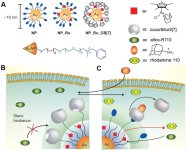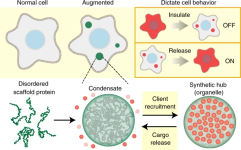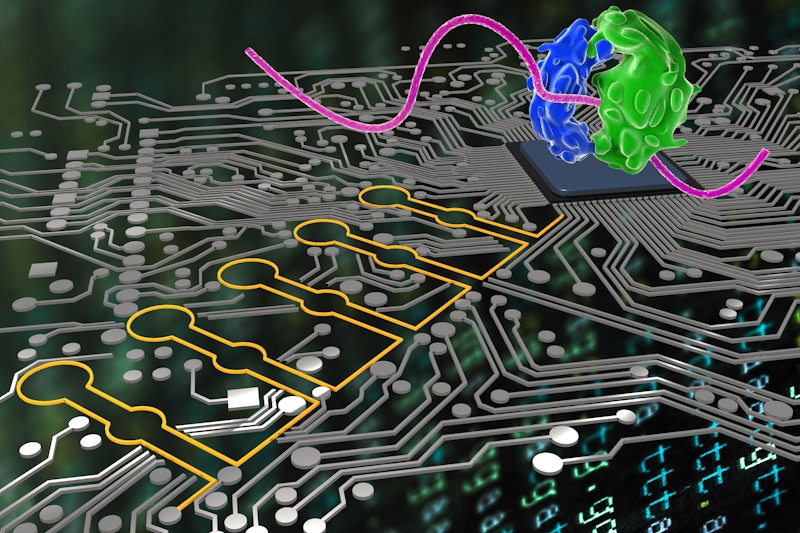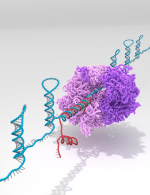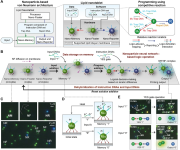When I was a kid, I was dimly aware of the Internet of Things. Telecom researchers were always going on about it back in the mid-2000s, and it started being adopted as an actual principle around the time smartphones showed up.
People were talking about cramming sensors and Wi-Fi and Bluetooth chips in everything, from picture frames to flower pots. I always felt that this was wasteful, pointless, and excessive. Just a bunch of new things in the house where you have to change out AAAs or button cells every few months to keep it working. Who the hell was buying those stupid refrigerators with screens in 'em and using them to watch football while they microwaved a hot pocket? Basically, IoT is pure bullshit. I always thought of it as a solution in search of a problem. It seemed so gimmicky, like a ham-fisted attempt to carve out a niche for something that simply didn't need to exist.
In retrospect, I am starting to believe that IoT was a trojan horse for something else entirely: the Internet of Bodies. That is, IoT where you are the thing.
They call it by many names. Internet of Bodies (IoB), Internet of Bio-Nano Things (IoBNT), Intra-Body Nano-Networks, In-Body Communication, Bionanotechnology, Biodigital Convergence, and so on and so forth. This is because the concept is so new that they haven't decided on harmonized jargon for it. A bunch of different scientists working on different branches of IoB came up with their own terminology, so we have like half a dozen different acronyms for the same thing. For simplicity's sake, I'll refer to implanted nanotech and cloud-enabled wearable medical devices primarily as IoB, the over-arching category that includes the other implementations of the same idea, with Bionanotechnology as the method.
There was a book published in 1946 by Oliver L. Reiser entitled The World Sensorium. To quote from the chapter, Birthing of the World Brain:
In this book, in the same chapter, there is also a quote from Julian Huxley, the brother of Aldous Huxley (the author of Brave New World, naturally), which reads:
Likewise, H.G. Wells held numerous talks and wrote essays on the thirties on the need for a "World Brain".

 arstechnica.com
arstechnica.com
To a certain extent, the internet has fulfilled that promise. Nearly 60% of the world's population has internet access in some form or another, allowing for instantaneous global collaboration, the sharing of knowledge and news, et cetera. It has brought us closer together in a way that no other technology has.
It has also sown seeds of division. As people started debating each other more often about their most strongly held personal beliefs that form the basis of their worldviews, many have retreated into echo chambers forming islands of serenity where all argument about anything beyond the most trivial of matters is avoided entirely.
These days, it's difficult to find someone willing to wade into a forum where most of the members hold an opposing viewpoint. Why bother, when one can always get a dopamine hit of approval from preaching to the choir? Even the moderators join in on enforcing echo chambers, deleting or suppressing posts that lie too far outside a forum's Overton Window. Try going on Sufficient Velocity and saying that the gas attacks in Syria were faked. I did that, once. I had a mod tell me, straight-up, "You can't say that the gas attacks in Syria were faked". It wasn't even up for debate. They just flatly denied it was possible, in spite of the leaked conflicting report that showed that the cylinders they found were likely hand-placed, and that the chlorine concentrations in the air were in the range of a couple parts per billion; no more than what you'd get from people doing their laundry.
So, we have a World Brain, but it's a partial one. It's not complete. It's not the damn-near-hive-mind that Julian Huxley and H.G. Wells envisioned nearly a century ago. Far from it. It's an engine of social tension, with disparate levels of access and incomplete coverage. It's like the unfinished Akulakhan under Red Mountain in Morrowind. The internet is an incomplete god.
There was always one final step to completing it, and that final step was connecting everyone's minds and bodies directly to the internet.
Every time I bring this up, people think I'm joking. There's no way. This is just some Black Mirror nonsense. They can't actually be doing this, right?
Wrong. Not only are they doing this, they're doing it right under everyone's noses. Everything about it is published out in the open, in plain view. Two of the leading figures in this field are Ian F. Akyildiz and Josep M. Jornet:

 ieeexplore.ieee.org
ieeexplore.ieee.org
A few key things to keep in mind:
How did I find out about these two researchers and their work? Simple. I asked ChatGPT using the GPT-4 model, and without hesitation, it told me. Everything.
A few years ago, Charles Lieber was indicted by the DOJ for double-dipping and taking money from China's Thousand Talents Plan against the terms of his DOD grants. He was collaborating with the Wuhan University of Technology and taking great big sacks of cash from China, and he was also engaging in tax evasion.

 www.justice.gov
www.justice.gov
Supposedly, he was working on silicon nanowire batteries for the WUT.
 www.science.org
www.science.org
There's just one problem. None of his papers involve batteries in any way, shape or form. All of his research involves bionanotechnology.
For instance, here's an incredibly creepy paper about having neurons internalize silicon nanowires by coating them with HIV TAT peptides, potentially using them as teeny tiny biosensors residing in the cytosol alongside all the little organelles inside those cells:
Yes, I'm sure this sort of research is very useful for building batteries. That's why he had gobs of DARPA, AFOSR, and ONR funding. Batteries. Right.
People were talking about cramming sensors and Wi-Fi and Bluetooth chips in everything, from picture frames to flower pots. I always felt that this was wasteful, pointless, and excessive. Just a bunch of new things in the house where you have to change out AAAs or button cells every few months to keep it working. Who the hell was buying those stupid refrigerators with screens in 'em and using them to watch football while they microwaved a hot pocket? Basically, IoT is pure bullshit. I always thought of it as a solution in search of a problem. It seemed so gimmicky, like a ham-fisted attempt to carve out a niche for something that simply didn't need to exist.
In retrospect, I am starting to believe that IoT was a trojan horse for something else entirely: the Internet of Bodies. That is, IoT where you are the thing.
They call it by many names. Internet of Bodies (IoB), Internet of Bio-Nano Things (IoBNT), Intra-Body Nano-Networks, In-Body Communication, Bionanotechnology, Biodigital Convergence, and so on and so forth. This is because the concept is so new that they haven't decided on harmonized jargon for it. A bunch of different scientists working on different branches of IoB came up with their own terminology, so we have like half a dozen different acronyms for the same thing. For simplicity's sake, I'll refer to implanted nanotech and cloud-enabled wearable medical devices primarily as IoB, the over-arching category that includes the other implementations of the same idea, with Bionanotechnology as the method.
There was a book published in 1946 by Oliver L. Reiser entitled The World Sensorium. To quote from the chapter, Birthing of the World Brain:
The analogy of society to an organism has frequently been employed, often for the purpose of supporting quite contradictory social theories. St. Paul, Frances Bacon, Herbert Spencer, Oswald Spengler, and many others have drawn diverse implications from the organismic analogy. The use to which the theory is put in the doctrine of scientific humanism is based on this one proposition: in previous uses of the analogy the assumption is made that society is an organism, whereas in the present view we suppose that society must become like an organism. This poses the question, if society is not yet an organism, but can in the future develop into one, what kind of social organism do we humans want to create?
In briefest terms, the answer of planetary democracy to this question is as follows: we need to create one with a sensorium, a central nervous system, with a world cortex for over-all planning and synthesis.
In this book, in the same chapter, there is also a quote from Julian Huxley, the brother of Aldous Huxley (the author of Brave New World, naturally), which reads:
"Before humanity can obtain on the collective level that degree of foresight, control and flexibility which on the biological level is at the disposal of human individuals, it must multiply at least tenfold, perhaps fiftyfold, the proportion of individuals and organizations devoted to obtaining information, to planning, correlation and the flexible control of execution. The chief increases are needed in respect of correlation and planning and of social self-consciousness ... In respect of planning and correlation, we can dimly perceive that some large single organization must be superposed on the more primitive system of separate government departments and other single-function organizations; and that this, like the cerebral cortex, must be at one and the same time unified and functionally specialized."
Likewise, H.G. Wells held numerous talks and wrote essays on the thirties on the need for a "World Brain".

H.G. Wells’ “World Brain” is now here—what have we learned since?
H.G. Wells presented a vision of society that events quickly eclipsed.
Humanity had all of the information necessary to live together in peace and harmony, Wells told his audiences; the trouble was that this information existed in a disorganized, dispersed state, and most people didn't have access to it. They certainly didn't have access to the most up-to-date information, and with the rapid pace of technological advancement in the early 20th century—leading to cars, planes, and especially radio—information needed updating constantly.
If only everyone had the same education, the same knowledge, the same understanding of what was important, his thinking went—if only everyone knew the truth—it was inevitable that we'd form a productive, peaceful, global society. Conversely, without his educational reforms, Wells felt there was no way we'd transcend the mess of grubby, meaningless insularities that is our civilization.
Wells was promoting a Permanent World Encyclopedia to collate, standardize, assess, and continually revise the bulk of human knowledge. He wanted knowledge and its dissemination to be centralized—"a World Brain which will replace our multitude of unco-ordinated ganglia... a memory and a perception of current reality for the entire human race."
To a certain extent, the internet has fulfilled that promise. Nearly 60% of the world's population has internet access in some form or another, allowing for instantaneous global collaboration, the sharing of knowledge and news, et cetera. It has brought us closer together in a way that no other technology has.
It has also sown seeds of division. As people started debating each other more often about their most strongly held personal beliefs that form the basis of their worldviews, many have retreated into echo chambers forming islands of serenity where all argument about anything beyond the most trivial of matters is avoided entirely.
These days, it's difficult to find someone willing to wade into a forum where most of the members hold an opposing viewpoint. Why bother, when one can always get a dopamine hit of approval from preaching to the choir? Even the moderators join in on enforcing echo chambers, deleting or suppressing posts that lie too far outside a forum's Overton Window. Try going on Sufficient Velocity and saying that the gas attacks in Syria were faked. I did that, once. I had a mod tell me, straight-up, "You can't say that the gas attacks in Syria were faked". It wasn't even up for debate. They just flatly denied it was possible, in spite of the leaked conflicting report that showed that the cylinders they found were likely hand-placed, and that the chlorine concentrations in the air were in the range of a couple parts per billion; no more than what you'd get from people doing their laundry.
So, we have a World Brain, but it's a partial one. It's not complete. It's not the damn-near-hive-mind that Julian Huxley and H.G. Wells envisioned nearly a century ago. Far from it. It's an engine of social tension, with disparate levels of access and incomplete coverage. It's like the unfinished Akulakhan under Red Mountain in Morrowind. The internet is an incomplete god.
There was always one final step to completing it, and that final step was connecting everyone's minds and bodies directly to the internet.
Every time I bring this up, people think I'm joking. There's no way. This is just some Black Mirror nonsense. They can't actually be doing this, right?
Wrong. Not only are they doing this, they're doing it right under everyone's noses. Everything about it is published out in the open, in plain view. Two of the leading figures in this field are Ian F. Akyildiz and Josep M. Jornet:

6G and Beyond: The Future of Wireless Communications Systems
6G and beyond will fulfill the requirements of a fully connected world and provide ubiquitous wireless connectivity for all. Transformative solutions are expected to drive the surge for accommodating a rapidly growing number of intelligent devices and services. Major technological breakthroughs...
6G and beyond will fulfill the requirements of a fully connected world and provide ubiquitous wireless connectivity for all. Transformative solutions are expected to drive the surge for accommodating a rapidly growing number of intelligent devices and services. Major technological breakthroughs to achieve connectivity goals within 6G include: (i) a network operating at the THz band with much wider spectrum resources, (ii) intelligent communication environments that enable a wireless propagation environment with active signal transmission and reception, (iii) pervasive artificial intelligence, (iv) large-scale network automation, (v) an all-spectrum reconfigurable front-end for dynamic spectrum access, (vi) ambient backscatter communications for energy savings, (vii) the Internet of Space Things enabled by CubeSats and UAVs, and (viii) cell-free massive MIMO communication networks. In this roadmap paper, use cases for these enabling techniques as well as recent advancements on related topics are highlighted, and open problems with possible solutions are discussed, followed by a development timeline outlining the worldwide efforts in the realization of 6G. Going beyond 6G, promising early-stage technologies such as the Internet of NanoThings, the Internet of BioNanoThings, and quantum communications, which are expected to have a far-reaching impact on wireless communications, have also been discussed at length in this paper.
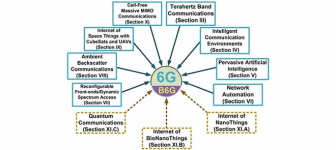
B. Internet of BioNanoThings for Health Applications
Highly relevant to IoNT, with its unique characteristics and applications, is the concept of the Internet of BioNanoThings (IoBNT). First introduced in 2015, the IoBNT has garnered significant traction in its efforts to synergistically combine telecommunications with healthcare solutions [174]. The IoBNT is a network of molecules which can communicate with each other. The types of molecular communications include artificial cells which act as gateways to translate between different molecule types, or a bio-cyber interface which can convert molecular signals to electrical ones and transmit to external devices for further processing [175].
In applications relating to human healthcare, the IoBNT harbors many unique challenges and opportunities. First, the interdisciplinary research on both communications and data analytics can greatly facilitate the modeling of biological processes, including cancer cell formations and Alzheimer's disease, and further design effective control measures for such diseases. Second, even though expressions of genetic codes at the cell- and organ-level can vary remarkably, in a manner analogous to various types of data applications in wireless networks, communication models can be developed and exploited to conceive a generally applicable health information framework. Third, the holistic network architecture envisioned in the IoBNT will integrate components at heterogeneous levels including within cells and among tissues, organs, as well as systems, before eventually connecting to the outside Internet for physicians to perform metric evaluations and propose treatment plans accordingly. However, healthcare solutions that are to be realized in such complicated biological and molecular environments should be built upon a solid understanding of the physics behind molecular communication and advanced statistical analysis tools in order to unveil the principles behind the seemingly random molecular movement.
A few key things to keep in mind:
- A lot of this tech is an outgrowth of experiments with optogenetics and chemogenetics from about a decade ago. Now, we have things like DREADDs (designer receptors exclusively activated by designer drugs), magneto proteins (ferritin-tagged TRPV4 ion channels that can be opened and closed remotely by electromagnetic fields), et cetera.
- Control the membrane potential of a cell, and you can control the behavior of the cell. One area where this is highly applicable is in creating wireless BCIs using nanotransducers, which take up residence in tissue and are activated by wireless energy, opening ion channels and altering the membrane potential of neurons. DARPA's BCIs in their N3 program are based on this concept. Incidentally, this could also be used maliciously. For instance, stopping someone's heart by altering the membrane potential of sinoatrial node pacemaker cells.
- You can tag stem cells with light-responsive proteins and use "optogenomics" with nanoscale lasers to alter the behavior, gene expression, and differentiation of a cell.
- They've done path loss calculations for Terahertz waves and found out that adipose tissue works as an excellent conduit for them. They even call it Fat-IBC.
- Graphene plasmonic nanoantennas can operate in the Terahertz band by taking advantage of surface plasmon polariton effects. These can be used as in-body relays.
- None of these things require their own discrete power supplies. They don't need batteries or capacitors. They can be powered by motion, by metabolism, by harvesting wireless energy, et cetera.
How did I find out about these two researchers and their work? Simple. I asked ChatGPT using the GPT-4 model, and without hesitation, it told me. Everything.
Part 1:

Part 2:


Part 2:

A few years ago, Charles Lieber was indicted by the DOJ for double-dipping and taking money from China's Thousand Talents Plan against the terms of his DOD grants. He was collaborating with the Wuhan University of Technology and taking great big sacks of cash from China, and he was also engaging in tax evasion.

Harvard University Professor and Two Chinese Nationals Charged in Three Separate China Related Cases
The Department of Justice announced today that the Chair of Harvard University’s Chemistry and Chemical Biology Department and two Chinese nationals have been charged in connection with aiding the People’s Republic of China.
According to court documents, since 2008, Dr. Lieber who has served as the Principal Investigator of the Lieber Research Group at Harvard University, which specialized in the area of nanoscience, has received more than $15,000,000 in grant funding from the National Institutes of Health (NIH) and Department of Defense (DOD). These grants require the disclosure of significant foreign financial conflicts of interest, including financial support from foreign governments or foreign entities. Unbeknownst to Harvard University beginning in 2011, Lieber became a "Strategic Scientist" at Wuhan University of Technology (WUT) in China and was a contractual participant in China's Thousand Talents Plan from in or about 2012 to 2017. China's Thousand Talents Plan is one of the most prominent Chinese Talent recruit plans that are designed to attract, recruit, and cultivate high-level scientific talent in furtherance of China's scientific development, economic prosperity and national security. These talent programs seek to lure Chinese overseas talent and foreign experts to bring their knowledge and experience to China and reward individuals for stealing proprietary information. Under the terms of Lieber's three-year Thousand Talents contract, WUT paid Lieber $50,000 USD per month, living expenses of up to 1,000,000 Chinese Yuan (approximately $158,000 USD at the time) and awarded him more than $1.5 million to establish a research lab at WUT. In return, Lieber was obligated to work for WUT "not less than nine months a year" by "declaring international cooperation projects, cultivating young teachers and Ph.D. students, organizing international conference,applying for patents and publishing articles in the name of" WUT.
The complaint alleges that in 2018 and 2019, Lieber lied about his involvement in the Thousand Talents Plan and affiliation with WUT. On or about, April 24, 2018, during an interview with investigators, Lieber stated that he was never asked to participate in the Thousand Talents Program, but he "wasn't sure" how China categorized him. In November 2018, NIH inquired of Harvard whether Lieber had failed to disclose his then-suspected relationship with WUT and China's Thousand Talents Plan. Lieber caused Harvard to falsely tell NIH that Lieber "had no formal association with WUT" after 2012, that "WUT continued to falsely exaggerate" his involvement with WUT in subsequent years, and that Lieber "is not and has never been a participant in" China's Thousand Talents Plan.
Supposedly, he was working on silicon nanowire batteries for the WUT.
Science | AAAS
In fact, one U.S. nanoscientist and former student of Lieber's says: "I have never seen Charlie working on batteries or nanowire batteries." (The scientist asked that their name not be used because of the sensitivity surrounding Lieber's case.)
There's just one problem. None of his papers involve batteries in any way, shape or form. All of his research involves bionanotechnology.
For instance, here's an incredibly creepy paper about having neurons internalize silicon nanowires by coating them with HIV TAT peptides, potentially using them as teeny tiny biosensors residing in the cytosol alongside all the little organelles inside those cells:
Semiconductor nanowire (NW) devices that can address intracellular electrophysiological events with high sensitivity and spatial resolution are emerging as key tools in nanobioelectronics. Intracellular delivery of NWs without compromising cellular integrity and metabolic activity has, however, proven difficult without external mechanical forces or electrical pulses. Here, we introduce a biomimetic approach in which a cell penetrating peptide, the trans-activating transcriptional activator (TAT) from human immunodeficiency virus 1, is linked to the surface of Si NWs to facilitate spontaneous internalization of NWs into primary neuronal cells. Confocal microscopy imaging studies at fixed time points demonstrate that TAT-conjugated NWs (TATNWs) are fully internalized into mouse hippocampal neurons, and quantitative image analyses reveal an ca. 15% internalization efficiency. In addition, live cell dynamic imaging of NW internalization shows that NW penetration begins within 10−20 min after binding to the membrane and that NWs become fully internalized within 30−40 min. The generality of cell penetrating peptide modification method is further demonstrated by internalization of TAT-NWs into primary dorsal root ganglion (DRG) neurons.
Yes, I'm sure this sort of research is very useful for building batteries. That's why he had gobs of DARPA, AFOSR, and ONR funding. Batteries. Right.
Last edited:






